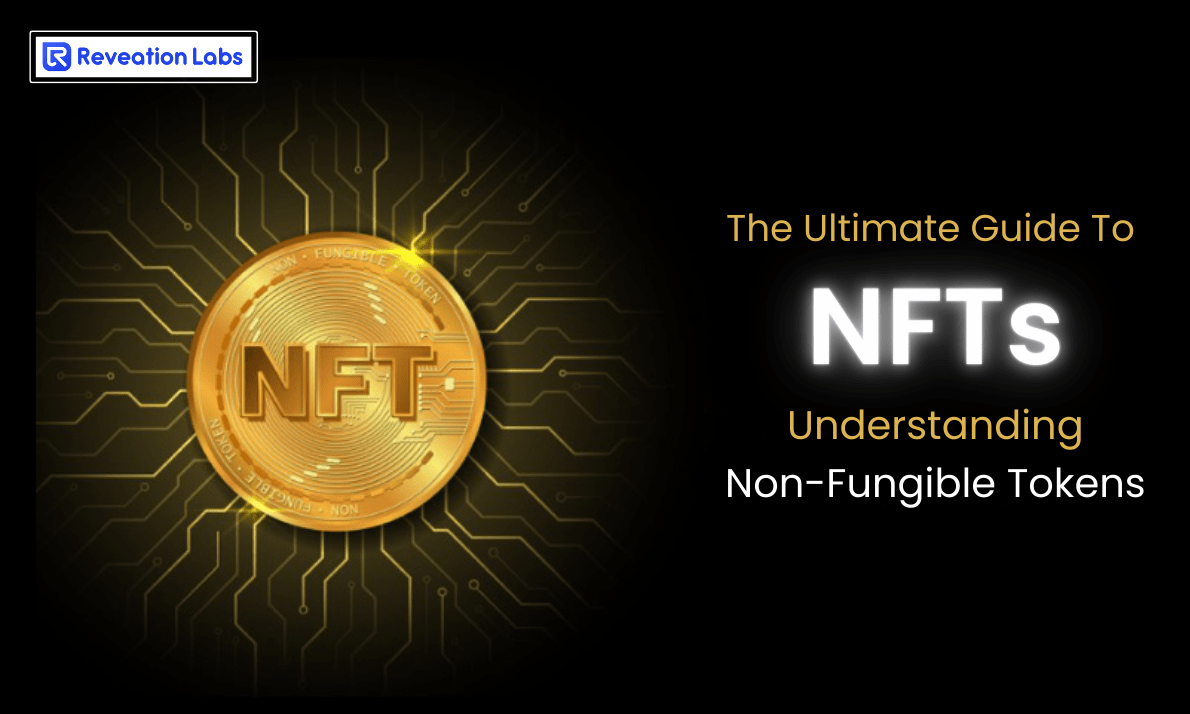Simran Advani
Fri May 26 2023


Introduction
In the world of blockchain, Non-Fungible Tokens (NFTs) have become increasingly popular in recent years. On a blockchain, NFTs are unique digital assets that cannot be modified or replicated. NFTs have gained widespread popularity for their use in creating unique digital artwork, collectibles, and even virtual real estate. In this blog post, we'll review the steps in creating your own custom NFT.
Meaning of NFT
A token known as an NFT can be used to signify ownership of special objects. In other words, a digital art NFT can be duplicated, but there can only ever be one true original belonging to one legitimate owner. The Ethereum network protects NFTs, making it impossible to change the ownership record or create a new NFT.
Let's dissect the moniker. Non-fungible is a term used in "Non-Fungible Token" to refer to items like music files and furniture. They cannot be exchanged for other things because they are all distinct items with separate sets of characteristics.
Landscape of NFT
The NFT ecosystem is ideal for establishing ownership over digital and material goods and protecting scarcity. This technology provides digital producers with solid monetization choices and flexibility frequently lacking in traditional creative industry models. It is safe and simple to sell digital material online by registering it as a non-fungible token (NFT) on the blockchain. Artists can make NFTs and receive unrestricted support from a global network of collectors.
The number of users on NFT markets like OpenSea has grown significantly in recent years. Statista states over $10 billion in NFT sales have occurred on the most popular NFT marketplace, OpenSea, since its inception.
Major NFT sales
Cryptokitties was one of the first NFT ventures to gain traction in early 2018. The game quickly gained popularity, partly thanks to reports of record-priced CryptoKitties being sold on blockchain.
Someone sold a CryptoKitty for $172,000 at some point. As a result, the Ethereum blockchain experienced congestion. It also highlighted the network's inefficiencies and inability to scale. Since then, the world of non-fungible tokens (NFTs) has grown beyond comprehension.
NFT Standards
Ethereum
Most non-fungible tokens on the Ethereum network are based on ERC-721 and ERC-1155. The NFT STARS platform supports the ERC-721 and ERC-1155 standards. ERC-1155 is more typically used for groups of multiple NFTs.
The ERC-721 protocol generates non-fungible tokens for particular assets. The token has comprehensive meta-data and can store transaction history. ERC-721's primary objective is to register copyright ownership. Because it can preserve transaction history, another essential aspect of this token standard is its capacity to handle royalty payments linked with each resale of the NFT.
The Avalanche C-Chain operates similarly to Ethereum and is compatible with Ethereum's smart contracts. Avalanche allows users to generate ERC-721 NFTs. Avalanche will also be used by the NFT STARS platform.
Binance Smart Chain
Binance Smart Chain includes an Ethereum Virtual Machine, making it compatible with Ethereum.
Tezos
TZIP-12 - allows users to manage fungible and non-fungible tokens and supports many token kinds. On the Tezos blockchain, this token standard is used. Its primary feature is the ability to incorporate an IPFS hash inside a Tezos-based coin.
Despite a lot of benefits, the token standard is not widely used and has few unique assets based on it. An NFT based on TZIP-12 will cost you very little, making it a very user-friendly blockchain.
Exploring the NFT space
NFTs might be intimidating to newcomers. Fortunately, there are several good NFT tools available to help with the process. This greatly simplifies the process of exploring and locating undervalued NFTs.
Anyone who wants to be an NFT artist must have a vision and be creative. Even if you aren't as good as Leonardo da Vinci but have a lot of ideas, it is worthwhile to create an NFT. This could also be a nice place to start for artists who have a large number of Beeple-like works in their digital studio waiting to be sold as NFTs. Creating an NFT does not have to be difficult, expensive, or technical.
Step-by-Step Guide to Create NFT
Step 1: Decide on the Concept and Design
The first step in creating a custom NFT is to come up with a concept and design for your digital asset. The concept could be anything from a piece of digital artwork to a collectible trading card. Once you have a concept in mind, you can start designing your NFT.
When designing your NFT, keep in mind that it needs to be unique and visually appealing. It's also important to ensure that the design fits the blockchain specifications you plan to use. Each blockchain has its own specifications for NFTs, so be sure to research and understand the requirements before you begin designing.
Step 2: Choose a Blockchain Platform
Once you have a design in mind, the next step is to choose a blockchain platform to create and store your NFT. Ethereum is currently the most popular blockchain platform for creating NFTs, but other options are available such as Binance Smart Chain, Flow, and Tezos.
When choosing a blockchain platform, consider the cost of creating and storing your NFT and the ease of use and availability of development tools. Ethereum has a higher cost for creating NFTs and uses a more complex programming language, but it also has a larger community and more development tools available.
Step 3: Set up Your Wallet
To create and sell NFTs, you'll need to set up a cryptocurrency wallet supporting your chosen blockchain platform. Various types of wallets are available, including desktop, mobile, and hardware wallets.
When setting up your wallet, be sure to choose a reputable and secure provider. You'll also need to fund your wallet with cryptocurrency to cover the cost of creating and storing your NFT.
Step 4: Mint Your NFT
Once your design and blockchain platform is selected and your wallet set up, you can mint your NFT. Minting an NFT means creating a unique digital asset on the blockchain representing your design.
You must use a platform that supports creating NFTs on your chosen blockchain if you want to mint your NFTs. There are different platforms available in the market, such as OpenSea, Rarible, and SuperRare. These platforms provide an easy-to-use interface for minting your NFT and a marketplace for selling and trading your NFT.
When minting your NFT, you'll need to provide information such as your digital asset's name, description, and image or video file. You'll also need to set a price for your NFT or choose to auction it off to the highest bidder.
Step 5: Upload your file
You're now finally ready to mint your NFT. Uploading your digital file to your chosen NFT marketplace should be explained in a step-by-step guide. This process makes it possible for you to create marketable NFTs from your digital files (such as PNGs, GIFs, MP3s, etc.).
Step 6: Sell or Trade Your NFT
Choosing how to monetize your NFT is the last step in the NFT minting procedure. You can, depending on the platform:
If you decide to conduct an auction, you must choose the minimum bid price, the royalties you want to continue receiving if your NFT is sold again on the secondary market, and the duration of the auction. (if timed). If you set the minimum price too low, you might not make any money on your NFT transaction, so consider fees when deciding.
Unfortunately, the price of minting and selling an NFT can be significant. You might have to pay a listing fee, an NFT minting fee, a commission on the sale, and a transaction fee to move money from the buyer's wallet to your own, depending on the platform and pricing.
Choose a blockchain for storing your NFT
All NFTs, of which there are many, are stored in a blockchain. So, after deciding what you want to convert into an NFT and creating a digital wallet, you must now decide which blockchain you want it to be hosted on.
Several factors must be considered when selecting the best blockchain for your NFT initiatives.
Here are a few examples:
Transaction speed: A blockchain's transaction speed significantly impacts the success of your NFT initiatives and transaction expenses.
Transaction cost: Because low transaction costs are critical to the widespread adoption of NFTs, cost-effectiveness is an important characteristic to consider while selecting a blockchain.
Smart contract functionality: Smart contracts are used by NFT platforms to establish trade agreements between buyers and sellers. A well-crafted smart contract on a blockchain ensures success. Take a look at it.
Consensus process: Blockchains can be hacked, and those that use the proof-of-work (PoW) consensus mechanism are particularly vulnerable. When selecting a blockchain, the proof-of-stack mechanism and its various types should be prioritized.
The Ethereum blockchain is the most widely used for NFTs. We also have Solana, Polygon, Cardano, Tezos, Polkadot, Binance Smart Chain, and other cryptocurrencies.
Create NFT in the simplest manner
So you now know how to perform an NFT. Creating an NFT necessitates a thorough understanding of blockchain technology and the numerous platforms for minting and trading digital assets. However, it is now easier than ever before, so NFTs are becoming more popular, often at a high cost. Thanks to blockchain technology, artists that move into NFT creation can earn a lot of money.
However, it is critical to recognize that NFTs do not always sell, and some will never make their creators money due to the expenses connected with selling on an NFT marketplace. To avoid losing money, sell NFTs that others will value and set a minimum price.
NFT production can be a lucrative venture.
As a result, those who create NFTs can profit greatly. However, given all the costs associated with minting and selling NFTs, not all NFTs will even sell, much less earn their originator any money. You need to be ready for the chance that you could lose money on your NFT creation because of the costs. Making sure you sell an NFT that others will value and setting a minimum price that will more than cover any related fees are the best ways to prevent losses.
Naturally, engaging in any new frontier is a big decision, particularly if it requires upfront financial investment. If you'd prefer to dangle your toes in the water and aren't currently trying to create a particular NFT, you can begin by investigating a few real NFT marketplaces and learning how they all operate.
Conclusion
Creating a custom NFT is an exciting opportunity to express your creativity and potentially earn income by selling or trading your digital asset. By following the steps outlined in this blog post and considering additional tips and considerations, you can create a unique and visually appealing NFT that stands out in the marketplace. The rise of NFTs represents a new era of digital ownership and creativity. By participating in this trend, you can be part of shaping the future of digital art and collectibles.
So, if you're ready to create your own custom NFT, take the first step today and let your creativity run.

Why Reveation Labs
We are a team that is technically proficient and simultaneously caring for your business. Our ideology is to provide the latest technologies that suit your business well.
Let’s discuss your requirements!
Give your business the next-gen technology it deserves. Be a part of our family of successful enterprises that work on high-end software solutions.
Experts
In all the latest technologies and developments.
Creative
To innovate the best solutions and pick the right technology for you.
Ethical
To always put you first & respect your business values and procedures.
Dedicated
To meet the deadlines and help you until the very end and beyond.
Approachable
For all your business needs and queries at any point of time.
Transparent
In our ways of working.





